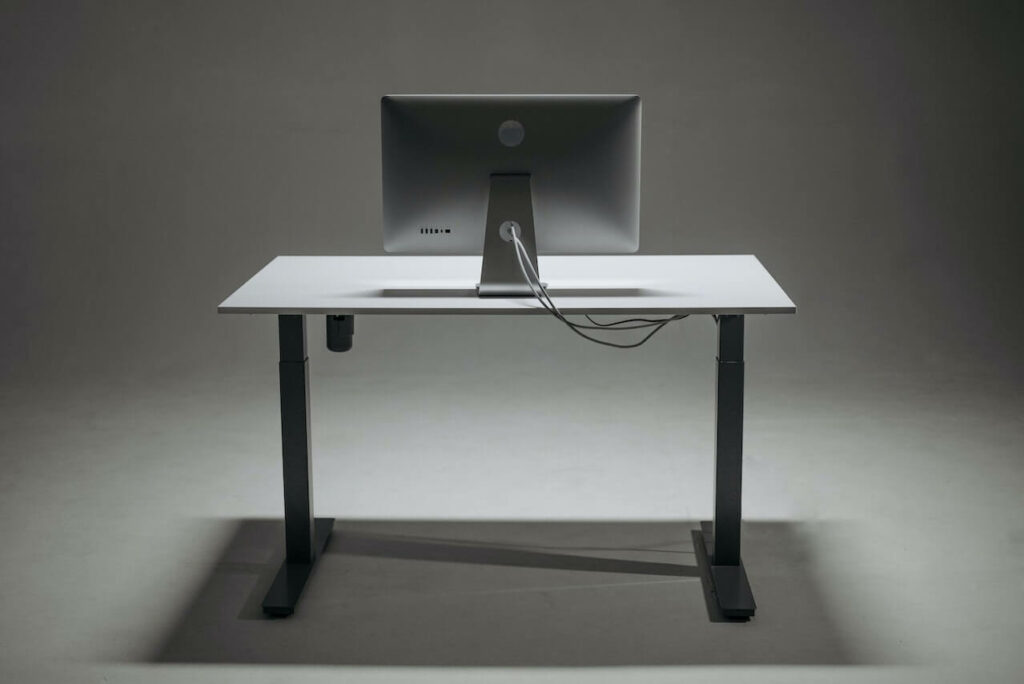In this article, we will discuss the key principles of ergonomic standing workstation guidelines, and provide practical tips on how to create a comfortable and safe working environment.
Why Ergonomics Matter for Standing Workstations
Ergonomics is particularly important for standing workstations because standing for long periods of time can cause strain on the body. When we stand, we put more pressure on our feet, knees, hips, and lower back, which can lead to pain and fatigue. Proper ergonomics can help alleviate these issues by promoting proper posture, minimizing repetitive motions, and reducing the overall strain on the body.
Benefits of Ergonomic Standing Workstations
There are several benefits to using an ergonomic standing workstation:
Reduce back pain and neck strain
Standing desks can help alleviate the pressure on your lower back and neck by promoting proper posture and spinal alignment.
Boost energy and productivity
Standing can increase blood flow and oxygen levels, which can help you feel more alert, focused, and productive.
Burn more calories: Standing can also help you burn more calories than sitting, which can contribute to weight loss and overall health.
Improve posture
Standing can help improve your posture, as long as you maintain proper alignment of your shoulders, hips, and feet.
Key Principles of Ergonomic Standing Workstation Guidelines
There are several key principles to follow when setting up an ergonomic standing workstation:
Adjust the height of your workstation: Your workstation should be at a height that allows your elbows to be at a 90-degree angle when you type. This will help prevent shoulder and neck strain.
Adjust the height of your workstation: The height of your workstation should be at a level that allows your elbows to be at a 90-degree angle when you type. This will help prevent shoulder and neck strain. If your workstation is too high, you may need to adjust your chair or use a footrest to maintain proper alignment.
Use a monitor arm: Your monitor should be at eye level to prevent neck strain. Using a monitor arm allows you to adjust the height and angle of your monitor as needed. Your monitor should be at eye level to prevent neck strain. This is particularly important if you use multiple monitors or if you frequently switch between sitting and standing.
Use an anti-fatigue mat: Standing on a hard surface can cause foot fatigue and lower leg pain. An anti-fatigue mat can help alleviate this issue by providing cushioning and support for your feet. Look for a mat that is thick enough to provide adequate cushioning, but not so thick that it becomes unstable.
Wear comfortable shoes: Wearing comfortable shoes with good arch support can help prevent foot and leg pain.
Take breaks: It’s important to take breaks throughout the day to stretch, move around, and rest your feet. A good rule of thumb is to take a 5-minute break every hour.
Benefits of Ergonomic Standing Workstations
There are numerous benefits to using an ergonomic standing workstation. One of the most significant benefits is improved posture.
When you stand at your desk, your spine stays in a neutral position, reducing the risk of back pain and other issues. Standing also engages the core muscles, which can help improve overall strength and balance.
Another benefit of using an ergonomic standing workstation is increased calorie burn. When you stand, you burn more calories than when you sit, which can help you maintain a healthy weight. Standing also increases blood flow and circulation, which can improve overall health and reduce the risk of chronic conditions such as heart disease and diabetes.
Additionally, using an ergonomic standing workstation can improve productivity and cognitive function. Studies have shown that standing can help improve focus and concentration, which can lead to better work performance. Standing can also increase energy levels and reduce feelings of fatigue, helping you stay alert and engaged throughout the day.
As someone who spends long hours at a desk every day, I can attest to the importance of using an ergonomic standing workstation. Since switching to a standing desk, I have noticed a significant improvement in my posture and overall comfort. I no longer experience the same level of back pain and discomfort that I did when sitting for extended periods. Additionally, I find that I am more alert and focused when standing, which has led to increased productivity and better work performance. Overall, I believe that using an ergonomic standing workstation is a simple but effective way to improve your health, comfort, and productivity at work.
FAQ
No, you can create a standing workstation using a regular desk and some inexpensive accessories such as a monitor stand and anti-fatigue mat.
It is recommended to alternate between sitting and standing every 30 minutes to an hour.
Wear shoes with good arch support and cushioning. Avoid wearing high heels or shoes with a narrow toe box.
If your standing workstation is set up correctly, you should feel comfortable and pain-free while using it. Follow the guidelines outlined in this article to ensure that your workstation is ergonomic.









